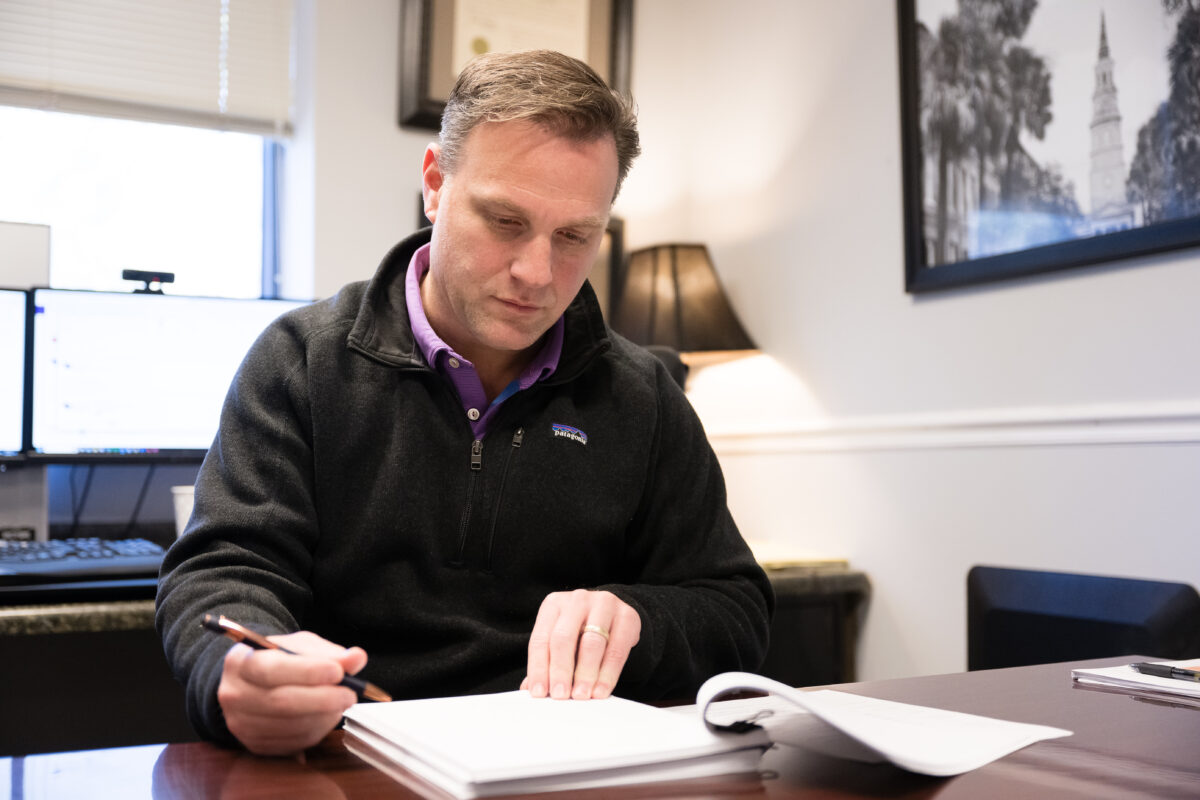
Many South Carolina worksites rely on ladders and scaffolding to access high areas. While these tools are essential, they pose major risks of injury or death if not used correctly. That’s why federal and South Carolina state regulations have strict guidelines on how scaffolding and ladders be used in work settings to minimize the danger of falls.
When mistakes happen or when employers ignore safety rules and regulations workers get hurt. Fortunately, South Carolina’s workers’ compensation system offers a crucial lifeline for injured workers in their time of need, regardless of who was at-fault for the injury. Falls can leave injured workers temporarily or permanently disabled, resulting in extended income loss on top of medical expenses. However, receiving medical treatment and compensation is not always straightforward.
If you have been impacted by a scaffolding accident or ladder fall at work, it is crucial to understand your rights. At Joye Law Firm, our experienced scaffold injury lawyers can help determine what compensation you may be due and fight to maximize what you receive.
Call Joye Law Firm now for a free review of your claim and advice about your legal rights.
The Dangers of Scaffolding and Ladder Accidents
Falls are a leading cause of workplace injuries and fatalities, particularly in construction. In 2021, they caused nearly 1 in 5 workplace deaths in the construction industry. Just over one-third of the construction deaths were due to falls, slips, and trips. Of these, almost all were from falls to a lower level. The construction industry accounted for 46.2 percent of all fatal workplace falls, slips, and trips in 2021, according to the U.S. Bureau of Labor Statistics.
Injuries from scaffold accidents can include:
- Broken bones (fractures)
- Deep cuts (lacerations)
- Internal bleeding
- Knee, ankle and foot injuries
- Neck and back injuries
- Spinal cord injuries leading to paralysis
- Traumatic brain injury (TBI)
Real Results for Real Clients
At Joye Law Firm, we are committed to fighting for injured workers and securing the compensation they need to move forward. Workplace accidents can have life-changing consequences, and navigating the workers’ compensation system alone can be overwhelming. Our experienced attorneys understand the challenges injured workers face, and we work tirelessly to ensure they receive the benefits they deserve.
For example, a worker at a metal supply company in Berkeley County tore his meniscus and MCL after slipping off an oily ladder. Despite surgery and therapy, he suffered ongoing hip pain and was left unable to return to work. Attorney Matt Jackson, head of Joye Law Firm’s Workers’ Comp department, took on the case, identifying additional injuries and building a strong argument that the worker was Totally and Permanently Disabled.
Through persistence and legal expertise, Attorney Jackson secured a $300,000 settlement, ensuring the client could support himself and his family despite his career-ending injuries. This case highlights the importance of proper reporting and skilled legal representation to achieve fair compensation for workplace injuries.
Jobs That Commonly Require Ladders and Scaffolding
Many professionals rely on ladders and scaffolding to safely perform their job duties at elevated heights. Workers across various industries frequently use these tools, including:
- Construction workers – Build, repair, and maintain structures
- Roofers – Install and replace roofing materials on homes and commercial buildings
- Painters – Paint high walls, ceilings, and exterior surfaces
- Electricians – Install, maintain, and repair electrical systems in elevated areas
- Window cleaners – Clean windows on multi-story buildings
- Maintenance personnel – Perform facility repairs, HVAC work, and other upkeep
- Sign and banner installers – Mount signs and billboards on buildings and poles
- Tree trimmers and arborists – Prune and remove trees using ladders or bucket lifts
- Telecom and cable installers – Set up and repair communication lines, satellite dishes, and cable systems
- Firefighters – Use ladders in rescue operations and firefighting efforts
- Utility workers – Maintain power lines, transformers, and streetlights
- Warehouse workers – Access high shelving units and storage areas
- Film and stage crew members – Set up rigging, lighting, and backdrops for performances
- Chimney sweeps – Clean and inspect chimneys and fireplaces
- Gutter installers and cleaners – Install, repair, and maintain gutter systems
- Solar panel installers – Install and maintain rooftop solar energy systems
- Bridge and tower inspectors – Conduct safety inspections on bridges, water towers, and cell towers
- Aircraft technicians – Service and repair aircraft components at elevated heights
- Theme park workers – Inspect and repair rides, attractions, and lighting structures
- Flagpole and monument maintenance workers – Install and maintain flagpoles, statues, and large monuments
These are just a few examples of professions where working at heights is a daily necessity. Whether workers depend on ladders and scaffolding every day or only occasionally, proper training and safety precautions are essential.





